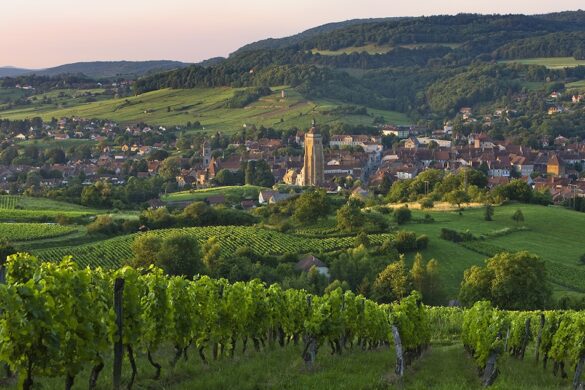There are many reasons Normandy is one of the top destinations in France. Some say Normandy is the birthplace of impressionism. Sadly, there are also less enchanting reasons the region is a top destination.
The Romans, Vikings, the English and much later the Germans, all played a role in Normandies tumultuous history. All this world-changing history results in some well-known sights that have become very popular tourist attractions.
For lovers of art and architecture, here, as with all other regions of France, it is still possible to find some real gems tucked away in small villages. One of these is the Saint Peter and Saint Paul church in the town of Aumale. Today the town might not look like much, but in its day, it was thought of as the la Porte de Normandie. This Renaissance church with traces of Gothic flamboyance, is one of the signs of the town’s former glory.
The church we see today was built between 1508 and 1607, the earlier church (dating to 1130, at least) having been destroyed in 1472 by ‘Charles the Bold’ (aka ‘Charles the Terrible’) during his rampage across northern France. As French rural churches go, this one may not be that old, but it has some exquisite features – and goes to show how exploring off the beaten path can be as rewarding as touring Normandy’s Top Ten attractions.
A program of restoration has been underway for over a decade now – both to the exterior fabric and the features inside the church. However the traces of Gothic influence are still evident throughout the church.
Looking down the nave towards the choir, and its sixteenth and nineteenth-century stained glass windows.
Looking back up the nave from the choir to the sixteenth-century organ. The organ’s casing is one of the oldest in the region – the first mention of the casing is in 1550, while the organ itself is dated to 1579.
One of my favourite features of this church is the terra-cotta holy sepulchre. Unfortunately, this is not the original, which was destroyed during the French Revolution, but a copy from Bourges Cathedral made in 1882. The marble crying angels are dated to the seventeenth century.
The exquisite frescoes on the ceiling of the side chapel that houses the holy sepulchre are some of the most exquisite and date back to the construction of the church. Depicting aspects of the Last Judgement, they were in a bad state and not well preserved at the time of the French Revolution which actually saved them from destruction. They were beautifully restored in the 1990s.
And of course, there is the ever-present, ubiquitous statue of Jeanne d’Arc!
About the Author:

To read more about Thomas’s archaeology travels, follow and connect with him on Facebook, Twitter .


















13 comments
The church is beautiful. That is one seriously old organ!
I’d like to hear it in action one day.
Those are so beautiful.So interesting to learn the history.Thanks for sharing.Love you
The French sure know how to do churches, don’t they!?
double trouble. 🙂
France is full of so many beautiful churches that are “off the radar”–thanks for showing us one of them. . . the frescoes are really special!
Thanks to Thomas Dowson at Archaeology-Travels. He really knows his area!
I love this – it’s so incredibly beautiful, and so interesting to learn the history. Thanks!
Thanks to Thomas Dowson at Archaeology Travels.
Gorgeous photos, and my dad’s name is Thomas Dawson.
It looks wonderful! Normandy is really beautiful…
So much history! I’d love to be able to see those stained glass windows.
Me too. You can contact the writer, Thomas Dowson for tours other info on the area. He lives in Normandy.